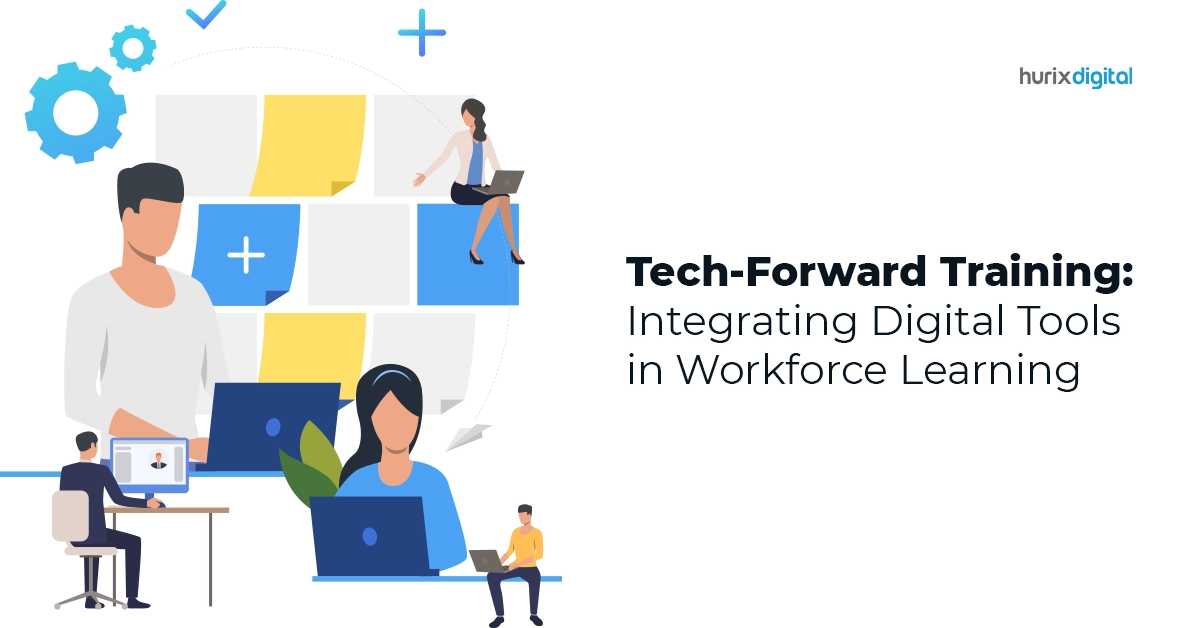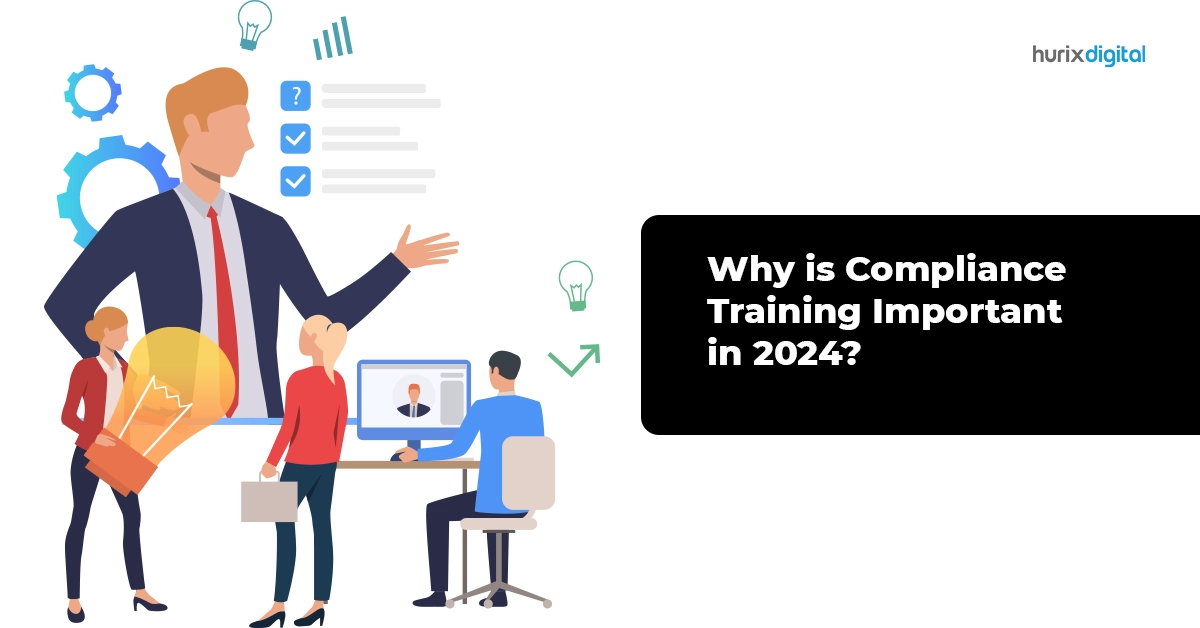Workforce learning has become essential for organizations. Training employees and providing them with engaging learning courses mutually benefits the company and its employees.
Interesting content ensures that your employees will be interested in the learning process. An engaged learner who is emotionally and mentally involved can better grasp new concepts, retain all information, complete the course and practically implement them.
Effective learning curves thus restructure employees’ attitudes towards skill-sharing and development.
Engaging content will also translate to better performance and a dedicated workforce. Therefore, companies should invest in formulating courses that are advantageous to their employees and supplement their interests and skills.
Engaging content has a higher success rate in training employees; they gain fulfillment by applying their knowledge to work. In workforce learning, employees have to collaborate on projects while learning; this helps them bond, which results in a healthy work atmosphere where employees thrive in collaborative and cross-team assignments.
A blooming workplace environment builds enthusiasm and motivation in the employees towards work, and they become loyal to the company, where they can witness the impact they make.
Table of content:
- Understanding the Learners
- Identifying Your Workforce’s Learning Needs
- What Will Help Employees Better Their Performance?
- What is the Focus of Your Course?
- Define the Expectations from the Course
- How to Make Workforce Learning an Easy Process?
Understanding the Learners
Creating courses does not guarantee that your employees will enroll in them. They are swamped with their workload.
Employees would be invested in learning when the program is fun and can contribute to their career advancement. So, knowing the learner is the foundation of any program.
It is crucial to grasp employees’ needs, ambitions, skills, and expectations to create a learner-centric course. Employees would not learn things effectively if the course content does not align with their attention, is not relevant, and the learning of which does not offer them satisfaction.
Before you begin curating your learning program, assess the competence level of your employees. It will direct you to deliver the support they need, and your curriculum will encompass teachings that will build on their existing skill set and knowledge.
A course cannot be fruitful unless the curriculum addresses what motivates the learners and what is their learning style.
Learning style determines the approach to delivering the course – whether it will be auditory, verbal, or audio-visual. Analyzing the learners, their backgrounds and interests, and what demographics they belong to can help design appropriate instructions and curricula.
If you know your employees’ needs, you will build courses and materials that are genuinely helpful and engaging.
Identifying Your Workforce’s Learning Needs
An organization invests resources in curating courses for its employees. So, they do not want their employees to leave midway. What is a sure-shot way to grab the learners’ attention throughout the course?
Learning new things is meaningful if the course addresses the challenges the employees are struggling with, helps the employees climb the corporate ladder, if it intrigues them, or adds value to their life.
It is crucial to ascertain where the gap lies in their knowledge and skills to assist your employees in navigating their challenges. Conduct one-on-one interviews to know their difficulties and what support they require to ace their game.
The course will be its testimonial. When the learners witness how they benefit from the experience, they will stay motivated and eager to learn till the end.
If you know what is holding your employees from performing, you will deliver exactly that to help your business objectives. The workload of employees is linked to the goals of your company.
If you prepare a program to meet your objectives, it would inadvertently answer all your employees’ doubts regarding the work process.
What Will Help Employees Better Their Performance?
Four factors determine the growth and performance of employees:
- The basic knowledge of concepts and theories that form the basis of intelligence, ability, and wisdom is key to stellar performance.
- The attitude of an employee can determine their career path. If they are interested in learning and working, they will be keen to learn new skills and perform well.
- Skills are the internal tools that enable employees to deliver their tasks. The better the skillset, the more proficient the employee. Skills can range from technical to soft skills that help people communicate and perform well in teams.
- Habits are unconscious choices that we make throughout the day. Great habits like punctuality, discipline, and attention can go a long way to paving the way for a dedicated employee.
What is the Focus of Your Course?
Whether a course is valuable is determined by its goals and curriculum. Setting the goals of a program gives us a final picture of what we want the learners to take away at the end of the experience.
It is crucial to define the goals before designing the course, as it is the floor plan on which the entire program is built.
Objectives are more tangible and smaller sections of goals. Having clear learning objectives help us in planning the content and materials and assessing if the course is working according to the plan.
The learners will also have a fair idea of the goals and objectives and what is expected of them.
Define the Expectations from the Course
No one will join a course before evaluating the most burning question of the century: ‘What’s in it for me?’
Time is of the essence, and employees do not have time to waste by engaging in something that will not benefit them. You can make your course worthwhile by making it engaging and useful, but you need to earn the trust of the learners first.
You can attain this by setting clear expectations from your course. You want to sell a compelling narrative to show how powerful the program is and what impact it can make on the employees.
Make a case on how the skills learned from the program will help them in their current job and help your business grow along with their interpersonal development.
How to Make Workforce Learning an Easy Process?
Let’s be honest. People are less likely to learn something if they are burdened with overwhelming concepts.
An over-the-top curriculum is detrimental to learners’ confidence, and they might feel at the bottom of the class, which can compel them to quit.
If you don’t want to see empty seats at your courses, then design them to suit everyone.
Everyone has different workforce learning curves and styles. To accommodate them all, it is vital to use an easy process. Present the material in lucid language. Follow a different set of instructions for slow and fast learners. You could also implement visual and audio-visual means as it helps learners retain information faster.
Another way to ease new concepts is by introducing them in short sections. Divide the content into comfortable sections and conduct assessments on those individual sections before moving on to the next.
The method of teaching can make or break a course. Engaging content goes hand in hand with meaningful instructions for the content.
Conclusion
An enriching learning experience would help employees broaden their horizons and apply their learnings to their work. It would also result in overall business growth.
Are you a brand looking to create courses that your employees will flock to attend? You can set up a consultation with Hurix Digital. Hurix designs engaging learning content for companies across industries.
To know more about developing workforce learning solutions for your company, drop us a line at contactus@hurix.com.











